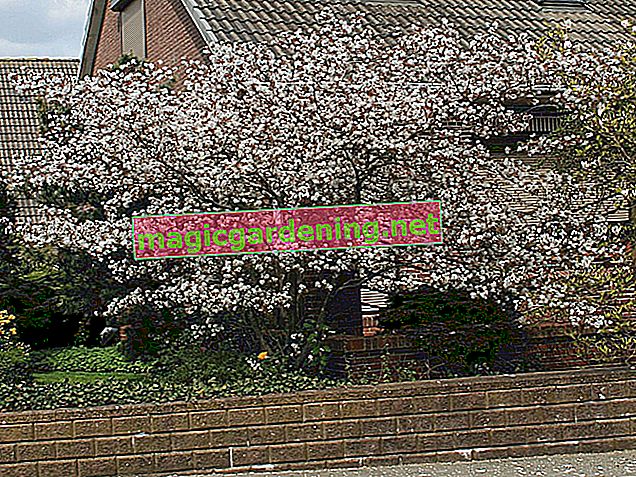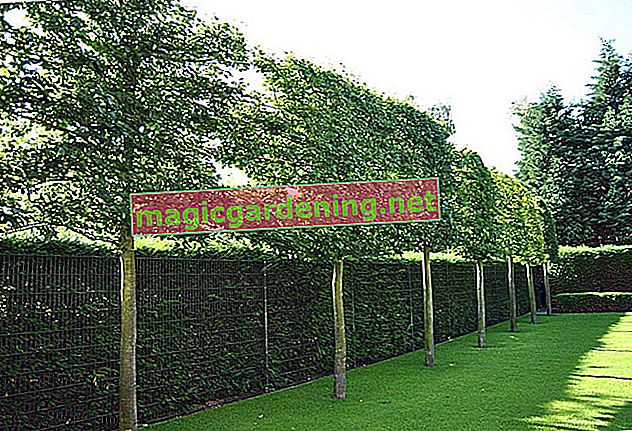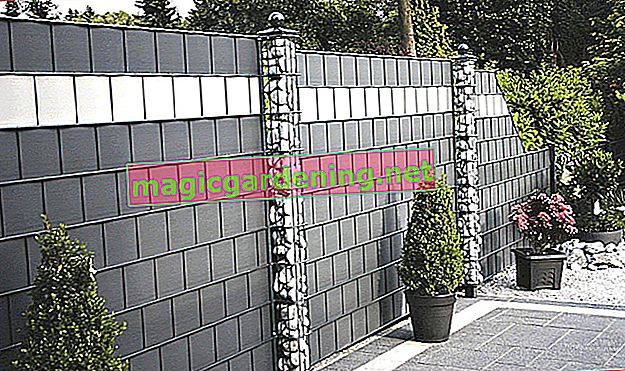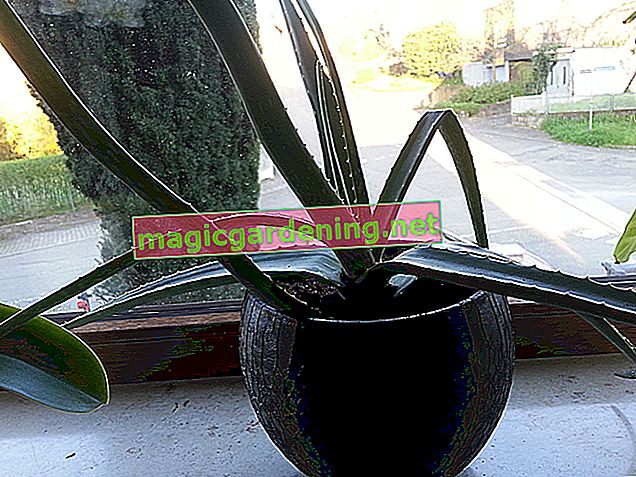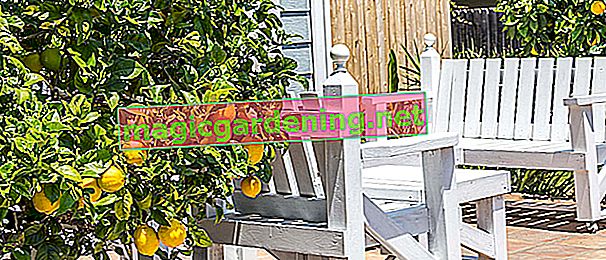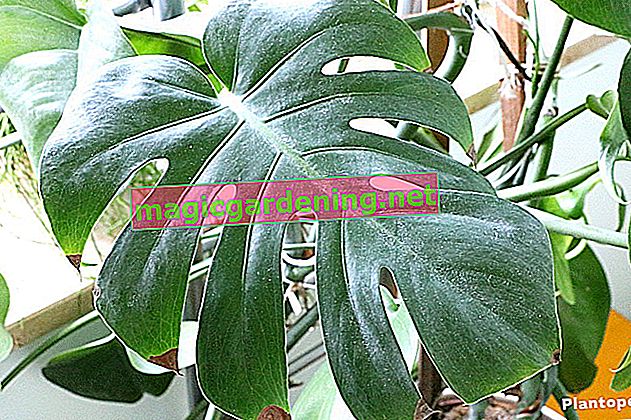
the essentials in brief
- Weevils have a trunk-shaped head extension, are 0.3-2 cm tall and dark in color.
- Lower classifications than plant pests are black weevil, apple blossom weevil, strawberry blossom weevil, large brown weevil, cabbage weevil and hazelnut borer.
- You can successfully control weevils by collecting them, using traps, nematodes, glue rings and neem press cakes. The best remedies against weevils in the house are the flower pot trap and nematodes.
What are weevils?
With a proud 51,000 to 60,000 species, weevils (Curculionidae) are the most species-rich family within the beetle order on our planet. Weevils and lower classifications are making themselves unpopular as pests in plant cultivation worldwide. Hardly any plant tissue is spared from the voracious beetles and insatiable larvae. Numerous species have specialized in ensuring that the local flora is sufficient for all weevils. Other species are generalists and eat whatever comes their way. If there is a high volume, a weevil plague in agriculture and gardening can destroy the entire harvest.
also read
- Identify and control bugs in the house
- Fight insects successfully, but biologically
- Fight grass mites biologically
Trademark trunk

The name refers to a long trunk in the middle of the beetle's face. This is a trunk-shaped extension of the head and not a suction organ. There is a chewing mouth tool at the tip of the trunk. Distinctly bent antennae that sit on the trunk are characteristic.
Central European weevils are a few millimeters to two centimeters in size. The beetle bodies are colored differently, with dark colors dominating in Germany. Some types shine in red, blue or metallic green. Colorful weevils are mostly found in tropical regions, such as the bright red palm weevil (Rhynchophorus ferrugineus), which specializes in palm trees in the Mediterranean region. Most of the time the wings are fully developed, but are not used. Weevils prefer to walk on their six strong legs.
Identifying weevils - an overview of common species
Of the approximately 60,000 weevils worldwide, around 950 species are native to Germany. Many genera and species of this cause considerable damage in fields, gardens, forests and parks. The trunk face that gives it its name is all on display. Only on closer inspection do individual distinguishing features become apparent. The following table gives important clues for six of the most dangerous weevil species in Germany in order to correctly identify the pest in question:
| Common types | Vine weevil | Apple blossom cutter | Strawberry blossom cutter | Big brown weevil | Cabbage weevil | Hazelnut wrench |
|---|---|---|---|---|---|---|
| size | 8-10 mm | 3.4-4.3 mm | 2.0-4.1 mm | 10-14 mm | 2.5-4.0 mm | 6-8.5 mm |
| colour | black-brown spotted | white-brown scales | black-brown glossy | gray-brown dotted | gray-blotchy | brown-white scales |
| legs | thickened in the middle | dark brown | dark brown | dark-gray-brown | dark gray | red-brown |
| Wing coverts | strongly rounded | Drawn in a V-shape | striped | yellow striped | mottled light gray | hairy comb |
| botanical name | Otiorhynchus | Anthonomus pomorum | Anthonomus rubi | Hylobius abietis | Ceutorhynchus | Curculio nucum |
The larva of a weevil is legless, white to cream-colored and has a brown head capsule. A curved posture is typical, so that weevil larvae are often confused with cockchafer larvae, rhinoceros beetle larvae and other grubs.
Way of life

Weevils crawl out of their winter quarters in early spring. Some species overwinter as a larva or pupa and hatch in spring. Hungry, the beetles rush to the fresh green to gather strength for the upcoming mating season. Various species have abolished their males and are capable of virgin generation. A female lays up to 1,000 eggs from which insatiable larvae hatch within a short time. One generation passes through each year.
The majority of weevils are crepuscular and nocturnal. Only in the cover of darkness do the beetles leave their hiding place and go in search of food. Typical feeding patterns are bay-like nibbled leaf edges, drilled buds and kinked flower stalks. Depending on the species of weevil, a larva develops inside the plant or in the ground. Mined stems and eroded roots are the result.
When temperatures drop in autumn, weevils reduce their feeding activity. Winter takes place in the ground, under dry autumn leaves or under the protection of the bark of trees.
Digression
Bark beetles are weevils
In German forests, a battle rages between humans and weevils for every single tree. As one of the most dangerous Curculionidae subfamilies, bark beetles (Scolytinae) wreak havoc on trees. Although the distinctive trunk of a bark beetle is only rudimentary, botanists categorize the species-rich subfamily as a lower-class weevil. Hobby gardeners with their own trees are sometimes confronted with the treacherous bark beetle subspecies book printer (Ips typographus), a dreaded pest for blue spruce and other magnificent conifers.Weevil species as plant pests
Because weevils prefer to be at work at night, a visual inspection is only reserved for night owls and early risers among amateur gardeners. Good to know that the dreaded gang of 6 members of the weevil family cannot only be determined by looks. The battered plant species and species-specific behavior act as further clues as to which weevil species haunt the garden at night and in fog or which cheekily is up to mischief in the house.
Black vine weevil (Otiorhynchus)

The dubious title “worst weevil in Germany” is bestowed on the black weevil. The furrowed vine weevil (Otiorhynchus sulcatus) in particular leaves a picture of devastation when it invades the garden in large numbers. The adult beetle and larva are not picky. More than 100 plant species are on the menu. At the beginning of summer, black weevils cause the characteristic, semicircular bay feeding on leaves. At the same time, their maggots in the ground attack the tender roots. The following plants are particularly affected:
- Azalea and Rhododendron
- Yew and thuja
- Firethorn
- lilac
- Cherry laurel
- Cornelian cherry
- rose
If the favored bushes with thick leaves are not available, the menu is quickly extended to herbaceous plants. Flowers and perennials such as cyclamen, asters, hollyhocks, fuchsias, geraniums and begonias are very popular. In addition, vine weevils do not spurn vegetables, such as tomato plants or peppers. The pests do not care whether the forage plants thrive in the bed, on the balcony or in the apartment.
Apple blossom cutter (Anthonomus pomorum)
Apple blossom sticks preferably overwinter in the immediate vicinity of fruit trees in leaf litter or under the tree bark. The pests become active in good time before the apple blossom begins. From mid-March, the females place their eggs in the swelling buds with the help of a laying tube. Within a few days, the larvae hatch and hollow out the inside of the bud. The bud continues to grow, but cannot develop. Pupation takes place in the balloon-like inflated bud, which gradually turns brown. Only as a fully grown beetle does an apple blossom leave the cradle of buds and relocate food intake outside.
Strawberry Blossom Piercer (Anthonomus rubi)

Strawberry blossom prickers live up to their name with a sophisticated propagation strategy. At the end of April, the female eats a small hole in each flower and lays an egg in it. Then the strawberry blossom kinks and wilts while the larva inside the bud fills its belly. After some time of gluttony, the weevil larva pupates, remains in pupil rest for some time and leaves the demolished flower as a finished beetle.
The prey scheme includes not only strawberry plants, but also numerous rose plants. Raspberries, blackberries and roses have to sacrifice their most beautiful flower buds to the insatiable brood of the strawberry blossom picker.
Great brown weevil (Hylobius abietis)
The large brown weevil is also aptly known as the spruce weevil. The stately beetle is widespread in the coniferous forests. The menu includes bark, which the beetle can easily eat thanks to powerful chewing tools on its trunk. Considerable damage occurs under high pressure of infestation, whereby young trees can even die. As a result of shrinking habitats, the respectable weevil is forced to invade gardens and parks. The large brown weevil has the following tree species in its sights:
- Spruce trees
- Douglas firs
- Larches
- Pine trees
The spruce weevil eats more rarely on deciduous trees such as alders or oaks. Its larvae develop in dead wood and freshly felled trees as well as the shallow roots.
Cabbage weevil (Ceutorhynchus)

The tiny cabbage weevil can cause great damage in the kitchen garden. The first beetles appear at a cool 6 ° Celsius and have overwintered in the shelter of a cocoon in the ground. After eating for a short period of time, females lay their eggs in the plant stems in the immediate vicinity of the terminal bud. The flyable weevil species has a wide range of foods:
- All kinds of vegetable cabbage
- Rapeseed, especially winter rapeseed
- Watercress
- radish
- horseradish
The actual damage is not caused by the ripening of the adult coal-budded weevil. Rather, it is the eaten larvae that bore their way through the inside of the stem and devour the pulp. In the immediate vicinity of the terminal bud, this process has fatal consequences because growth comes to a standstill. In addition, scientists have found that when the stalk is pierced to lay eggs, various pathogens can be transmitted.
Hazelnut borer (Curculio nucum)
The hazelnut borer boasts an epic long trunk. Evolution has equipped the weevil with this tool so that it can pierce hard hazelnut shells and absorb the firm pulp. The weevil owes its reputation as a pest not least to the fact that the adult beetles attack cherries, pears, apples and other fruits in spring. In this way, the pests bridge the time until the first hazelnuts ripen so that females can lay their eggs in the young nuts.
Fighting weevils - this is how it works without poison
So that weevils do not gain the upper hand in the garden, chemical agents are superfluous. For a successful control, affected hobby gardeners can fall back on an extensive spectrum of effective manual, mechanical and biological means. The following table gives an overview:
| Manual means | Mechanical means | biological agents |
|---|---|---|
| shake off | Flower pot trap | Nematodes |
| collect | Furrow trap | Glue rings |
| Pick off the buds | Corrugated cardboard trap | Neem |
The recipe for success for poison-free control is the combination of several strategies. But be careful: not every combination makes sense. The garden is spared from a weevil plague if adult beetles and larvae are controlled at the same time. The correct procedure for the recommended methods is explained in more detail below.
Manually control weevils

Weevils are masters of an ingenious deception as a defense strategy. If the insects sense a threat, they simply play “dead beetle”. For this purpose blackjack weevils and other species can simply fall to the ground. You can use this tactic against the eaten pests. That is how it goes:
- Spread old cloths or foil under infested plants the day before
- get up the next day with the chickens
- Shake infected wood and plants
Even slight vibrations cause weevils to drop. For this reason, the collecting sheet should be spread out when the beetles are still in their daytime hiding place. If you are not one of the early risers, use the option for night owls. After dark, arm yourself with a torch and bucket to collect the weevils from the leaves one by one.
Pick off any suspicious buds

Laying eggs in flower buds causes catastrophic damage in the garden. Often natural means cannot prevent the clever female weevils from laying eggs. So that the eggs do not turn into larvae and adult beetles, occupied buds are picked in good time. Daily controls of the bud development provide information as to whether there is a larva in it. If you stay on the ball, it will not remain hidden from you if a bud does not want to open, gradually turns brown or puffs up suspiciously.
Getting rid of weevils mechanically
Weevils are trapped using simple methods. You don't have to dig deep into your pocket because you can build effective safety gears yourself. The following models have proven themselves in practice:
- Fill the flower pot with wood wool or straw and place it upside down on a stick next to the forage plants
- Place grooved decking upside down under endangered plants
- Cut the corrugated cardboard into 20 cm wide strips and wrap around the tree trunk
All three traps offer weevils as daytime hiding places. The apartment-seeking bugs cannot resist upturned pots with tempting fillings. After eating the plants, the tired insects crawl in early in the morning and can be collected. The furrows on a disused decking board function in a similar way. With strips of corrugated cardboard, apple blossom picks and hazelnut burs can be caught.
Use biological agents against weevils
Manual and mechanical remedies for weevils aim to control the early stages of an infestation. If the beasts appear again in the garden, you should ignite level 2 control with biological means at the latest. The focus is on 3 problem solvers who do without toxic components:
Nematodes

Beneficial insects versus pests has emerged as a successful model in the near-natural garden. In the fight against black weevils, the powerful shooting aid comes in the form of tiny threadworms, called nematodes. The microscopic worms parasitize the pests and thus render them harmless. Because there are only specialized species in the realm of the nematodes, different nematodes are used against adult black weevils than against larvae.
The nematode genus Heterorhabditis targets the voracious larvae of the black weevil. Because the fat maggots live in the soil, the watering method has proven effective. HM nematodes are dissolved in water and applied with a watering can. The time window for fighting is open from April to early June. The most important prerequisite for successful control is a minimum temperature of 12 ° Celsius. In the following 6 weeks the soil is kept slightly moist, which provides the hard-working nematodes with ideal conditions. A positive side effect: if the roundworms are in action, they also devote themselves to the larvae of the June beetle.
Steinernema carpocapsae nematodes act as a natural fighting force against adult black weevils. Because nematodes dissolved in water are lost to the large beetles, the beneficial insects are placed as a trap. In a life-sustaining gel, the roundworms rest in the furrows of a wooden board. Place the trap on the garden soil with the grooves facing down. If a black weevil crawls under the board, it will catch the nematodes that will kill it.
YoutubeGlue rings
Rings of glue form a poison-free barrier against cunning weevils on tree trunks. A special glue is optionally applied directly to the bark or attached as a glue-coated tape around the trunk. Because many weevils do not like to fly or are unable to fly, they crawl up the tree trunk in the direction of the crown to eat or lay eggs. The pests stick to the glue ring and die. Incidentally, the sticky tapes are ideal for protecting endangered potted plants from beetle infestation. Attach a glue ring to the top of the vessel.
Neem
Squeezed seeds of the neem tree spoil the appetite of black weevils. You can get the remedy as a neem press cake in specialist shops. Just 50 grams per square meter are enough to kill the pests. Work the preparation superficially into the soil, ideally near susceptible plants. The neem oil contained in the press cake is a deadly poison for weevils. On the other hand, neem is safe for humans and pets. It is important to note that a combination of neem and nematodes is counterproductive and does not work out well for the roundworms.

Tips
If hedgehogs live in your garden, harmful weevils are bad cards. The spiked beneficial insect likes black weevils and the like to eat. You shouldn't chase a mole either, because it eats fat beetle larvae in the garden soil with great pleasure.
Weevils in the house - what to do?
Weevils get into the house in different ways. They often enter the substrate of new potted plants as stowaways. Sometimes blackjack weevils march on their strong legs from outside into living rooms. Woods close to the house or potted plants on the terrace and balcony serve as a starting point. You seldom see the nocturnal secret lights. Rather, the typical, semicircular feeding pattern on the leaves of your indoor plants reveals the presence of weevils in the apartment, not infrequently in the kitchen or even in the bathroom. How to get rid of the pests:
Flower pot trap
With a slight modification, the tried and tested flower pot trick from the garden can be transferred to weevils in the home. Use a plastic saucepan. Cut a 1 to 2 centimeter small, semicircular entrance into the edge of the vessel. Then pad the pot with wood wool, cotton or straw. Set up the beetle trap near plants that have been eaten. If you don't want to cut the flower pot, put a Lego brick or piece of wood under the edge. Black vine weevils cannot resist the cozy daytime hiding place. Empty the pot trap in the organic waste bin every day and repeat the process until there is no more damage to the plants.
Nematodes
The flower pot trap only defeats adult weevils in the house. Because you can never be sure whether eggs have already been laid in potting soil, we recommend the double strategy with HM nematodes. You can buy the hard-working roundworms in specialist shops. The beneficial insects are delivered embedded in clay granules that you dissolve in water. You can choose to pour or spray the enriched water onto the substrate of infested plants. Weevil eggs or larvae in them have nothing to oppose the nematodes and are destroyed.
frequently asked Questions
Can weevils fly?
Most species of weevils have normally developed wings that allow them to travel short distances. The beetles prefer to stay on the ground and move comfortably on their strong legs. Thanks to the hairy soles of their feet, weevils can even cope with smooth surfaces. A few species rely entirely on their legs because of the lack of wings. These include the large black weevil (Otiorhynchus coecus), whose habitat extends over the low mountain ranges and the Alps.
Will my fruit and vegetables still be edible if I control the black weevil with nematodes?
Nematodes of the genus Heterorhabditis specialize in beetle larvae. The microscopic nematodes penetrate a larva through body orifices or the skin. There they secrete bacteria into the larval blood. These bacteria multiply explosively and kill the beetle larva within a few days. Meanwhile, the threadworms feed on the bacteria and in turn multiply. The nematodes have no interest in the plant in question. There is therefore no reason to be concerned that the beneficial insects could establish themselves in fruits or vegetables.
Can we identify weevils from the feeding picture?
Weevils create an unmistakable feeding pattern on infested plants. Semicircular indentations can be seen on the leaf margins, which are more or less pronounced. Small species of weevils leave typical gear-like indentations on the leaf margins. Species that specialize in eating wood are revealed by gnawed areas on the bark.
What really helps against weevils?
Weevils have a hidden, nocturnal lifestyle and have tough chitinic armor. These properties make the beetles immune to contact insecticides of all kinds. If you suspect an infestation, a night-time check with a flashlight will prove it. You can collect the tracked specimens by hand. A flower pot stuffed with wood wool, in which the beetles gather during the day, is more effective.
Tips
Weevils are introduced into the garden and into the house as stowaways in potted plants. It cannot be seen from the substrate whether it is infected with eggs or larvae. The best prevention against the voracious brood is timely repotting of each new plant. Ideally, the fresh potting soil should be disinfected in the oven at 100 degrees Celsius before use.

